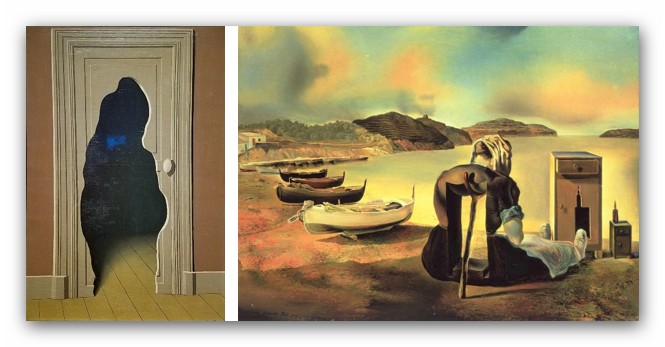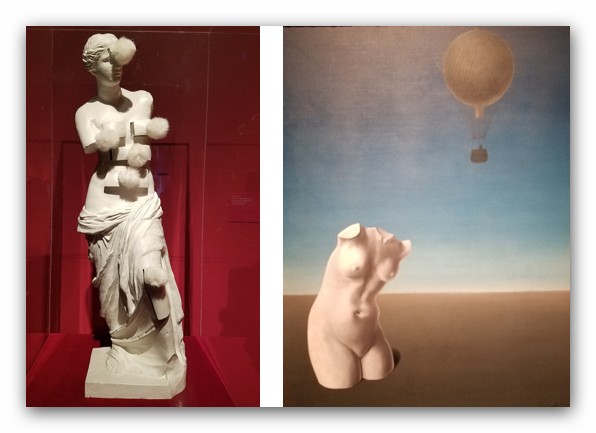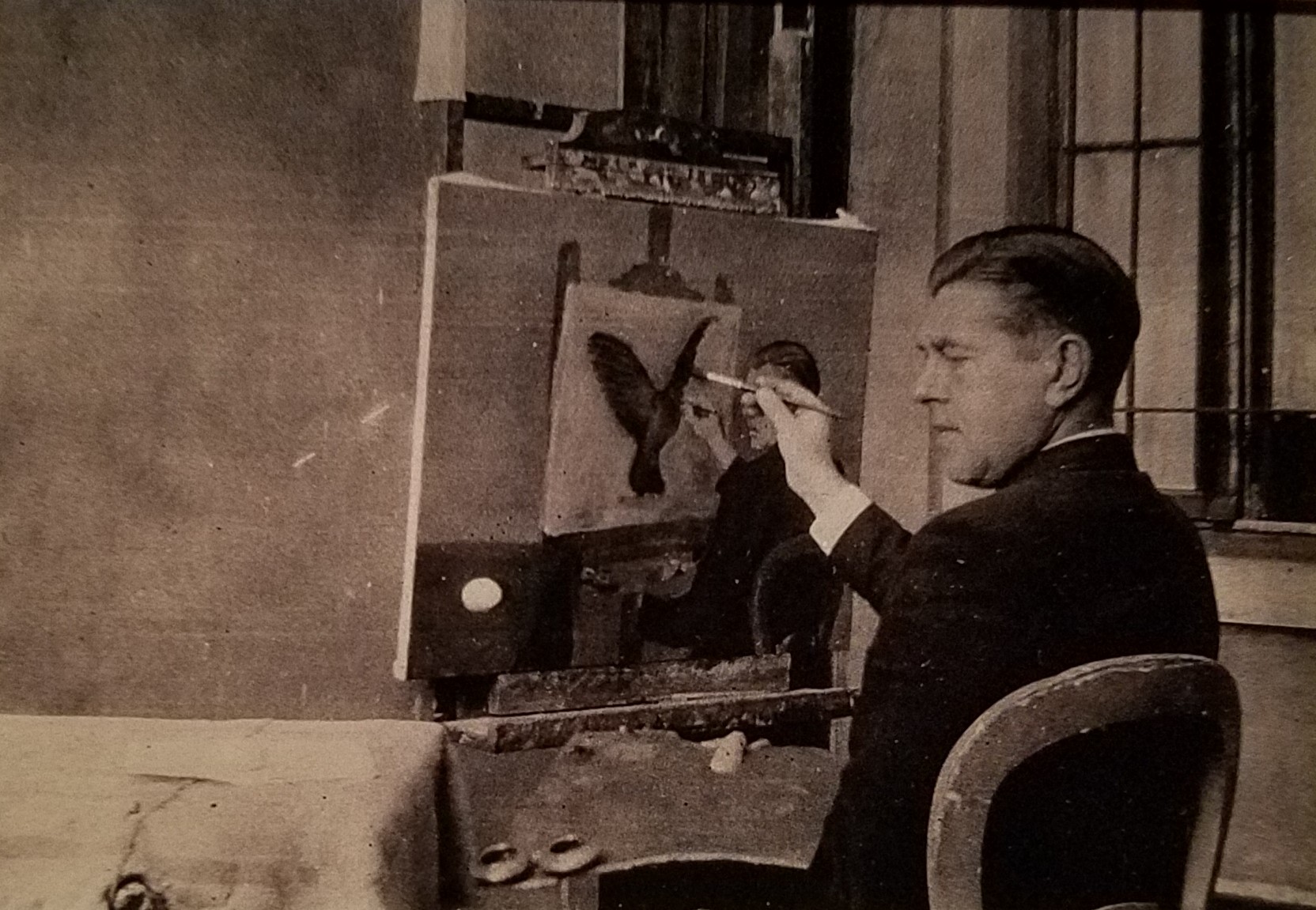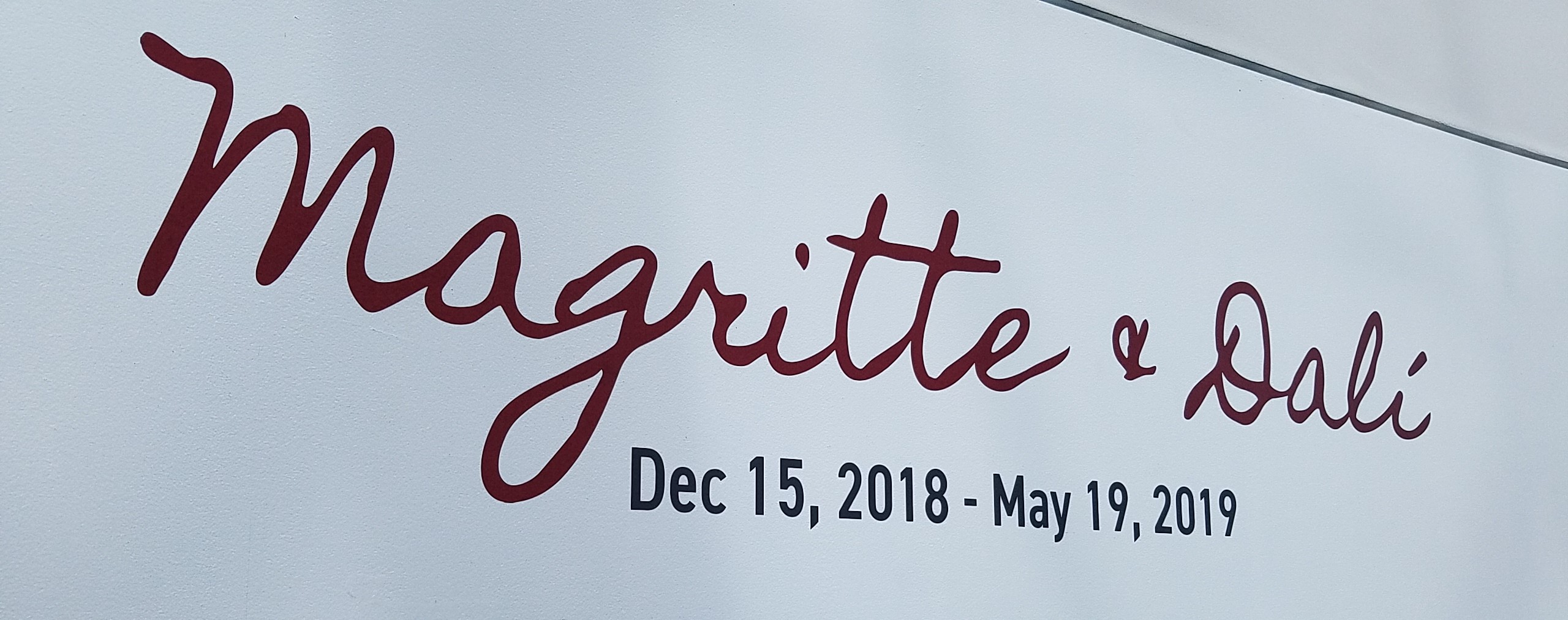The exhibition at the Salvador Dali Museum penetrates the real and the irrational that characterizes Magritte’s & Dalí’s painted images.
Magritte & Dalí — at the Salvador Dali Museum in St. Petersburg, FL through May 19, 2019 — presents exemplary pieces from René Magritte’s and Salvador Dalí’s output, to reveal what lies beyond the surface appearance of their painted images.
These two preeminent surrealists presented an alternative view of the world, constantly challenging pre-conceived notions of what is real. While creating familiar, realistic pictorial representation, both artists introduced unexpected, inexplicable details and relationships into their works. Recognizable, yet enigmatic.
Magritte & Dalí explores the period from the late 1920s to the early 1940s when the two artists spent a good deal of time together and displayed their works in the same Surrealist exhibitions. Magritte arrived in Paris from Brussels in 1927, and the two met almost immediately after Dalí’s arrival two years later. Soon they were both embraced by the circle of Surrealist writers and artists.
Although each approached his work in his own singular way, they were equally committed to implementing practices that challenged reality and generated fuller freedom of imagination and experience. In fact, there was something of a dialog between them in their paintings, as they addressed several shared themes. The exhibition explores the similarities in their ideas while at the same time revealing their differences.
For example, both applied the concept of seeing through, using “holes” to penetrate the familiar to show something other than expected, confounding inner and outer vision.

A frequent subject for academic painting and a subject also common to both Magritte and Dalí is the female nude. Both referenced the Louvre’s Venus de Milo — which had been discovered in 1820 and was famous by the early 20th century – tapping into a familiar image carried in the contemporary consciousness.

Another theme common to both artists is that of double images, which wall text tells us they had arrived at by 1940. “For Dalí, this meant one could see in an image, shape or void another image, or even multiple images. For Magritte, two images could be merged into one and so offer the possibility of a second reading of reality. […] In both cases, the limited relation between things allowed by objective reality is replaced by limitless associations that are driven by the mind’s own impulses and desires.”

There were, however, real differences between them. Magritte’s controlled, spare style reflected the stolid naturalism of 19th-century Low Countries Realism. Whereas Dalí, a hot-blooded Spaniard, projected emotion and flamboyance, as he mingled microscopic detail with vast landscapes in his hyper-real distinctive style.
There existed two quite opposite strains of Surrealism: one known as automatist, in which forms were abstract and apparently random (think Ernst and Gorky, for example), and the other, veristic, with realistic depictions of recognizable objects complexed by the fantastic and impossible, as seen in the Magritte & Dalí exhibition.
This show is the first to juxtapose the work of these two celebrated artists, considering both the similarities and the differences between them, and providing terrific context for understanding the veristic strain of Surrealism.
Magritte & Dalí is at the Salvador Dali Museum in St. Petersburg, FL through May 19, 2019.
Read Hello Dalí, our article about Salvador Dalí and the Dalí Museum in St. Petersburg. Highly-recommended.
